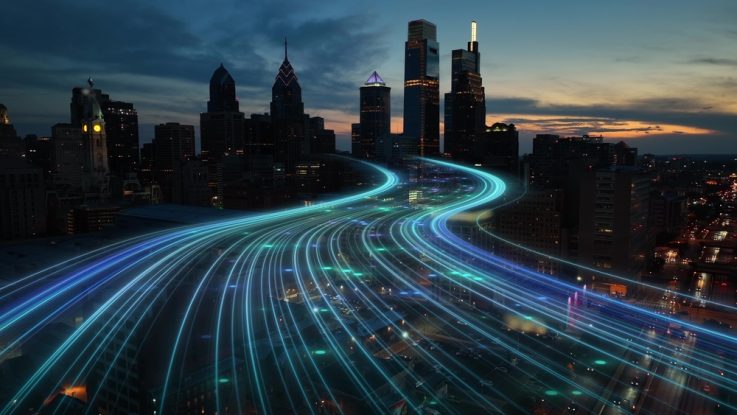
As a community of smart city professionals, we are all working towards imagining the future. If you’re a government leader, you are most likely trying to figure out how to deliver more with less for a diverse community of citizens and residents. If you’re a leader in the private sector (yes that includes you, entrepreneurs) you are most likely trying to figure out how to deliver digital applications that meet the unique needs of each municipality at a platform-level scale. If this sounds overwhelming, perhaps it helps to know that everyone is experiencing some level of shared discomfort.
The larger question between these two realities is how to embrace innovation (new approaches to thinking and doing) in a way that doesn’t overwhelm or undermine humanity. These are the questions that more than 500 people explored in a 24-hour period at the Impact Innovation Summit (September 17-18, 2024) hosted and produced by the City of Helsingborg, Sweden.
I was fortunate enough to attend and be part of a group that agreed to face big challenges with honesty, hope, and humility. The experience lived up to its name and delivered an inspiring level of Impact and Innovation. Here are a few (of the many) things I took with me from the experience.
Understanding Change
What this means:
We are all living in a period of transformation and an accelerating pace of change. For those who like a steady, controlled way of understanding and influencing our world, this can be a challenging time. Navigating new ways of living and working (and providing services to all city residents) is daunting work that can manifest confusion and fear.
Helpful approaches:
- Know that you are not alone. Everyone (including your residents) are dealing with their own levels of collective unknowing and uncertainty. In some ways, we are each on the edge of learning new things.
- Acknowledging that “this is hard” to your colleagues and partners can help create a shared understanding that can lead to relief. Feeling supported is a key ingredient to creative problem solving.
- Everyone is working at their own pace. For some, the future is already here. For others, they may feel it as an impending reality and so it is important to create spaces to discuss what this means and how we each have the opportunity to influence what happens next.
Exploring Possibilities and Envisioning Success
What this means:
Asking “what is possible” can actually be a fun activity that ignites imaginations and sparks a spirit of creative problem solving. But often our organizations are structured in hierarchies (org charts), mundane practices (meeting marathons), and flat deliverables (reports). While these org charts, meetings, and reports have their purpose, it is important that they are included in a more holistic way of working where creativity can flourish.
Helpful approaches:
- Think about what elements of your work are playful. Discuss this with your (internal or external) team(s). How can you find ways to add more inspiring experiences? It’s okay to start small and build from there.
- Can you have meetings where you remove titles (and other ways we “label” each other)?
- Remember that not everything needs to move quickly. Envisioning the future means being able to slow down and reflect.
- Practice tolerance with yourself and with others
- Acknowledge any discomfort as a group. Creating new things is hard work.
- Visualizing a different future requires focusing on your purpose. Ask questions like “Where are we going? Can we imagine a new future? What does that future look like?
Inclusion as a Starting Point
What this means:
Innovation and impact cannot exist without a focus on partnerships built on respect. An environment of respect supports people in being bold and expressing their ideas. Of course collaboration is critical and depends on dismantling silos and distributing power on who has influence and agency.
Helpful approaches:
- Have an empty chair in the room for someone who isn’t there (but should be)
- Identify who the system shakers are. Why do they inspire you?
- Seek out those people or organizations who have faced similar challenges. What can you learn from them? Can you identify best practices or hard-learned lessons?
- Inclusion means asking questions like “For whom are we doing this? Are they a part of this process? Are we adopting an inclusive mindset? Are there dominant perspectives that we need to examine? Do we really understand everyone’s values, needs, issues? How can we better understand?
Finally, what I learned from the organizers, speakers, and participants at the Impact Innovation Summit is that doing things differently requires confidence that comes from a shared understanding. This doesn’t mean that everyone agrees all of the time. In fact, it is okay to (respectfully) disagree and this can influence new thinking and approaches. It is important to create an environment of trust and safety so that everyone has the power to disagree. From that place you can create common perspectives and invite creativity. Challenges to innovation are almost always (80%) people related, and not a result of technical issues. Identifying shared values, being clear about what you care about, and what is a priority for your community is a foundational step to identifying potential outcomes and solutions (some of which may be technical.) The key is to enjoy the process.
At the end of the 24-hours, attendees were posed with a final question, “Are You In?” to which a committed group responded, “I’M IN!” I hope that this inspiring event continues to make an impact and generates new ideas on ways to create a better future. Please visit the Impact Innovation Summit site to learn more about this event and the people who made it happen. Special thanks to the talented team of City of Helsingborg.